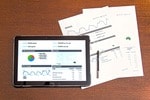
Is DocuSign Stock Undervalued?
Digital signature software business DocuSign (NASDAQ:DOCU) has been struggling over…


Digital signature software business DocuSign (NASDAQ:DOCU) has been struggling over…

Cybersecurity major SentinelOne (NYSE:S) has struggled over several years, delivering…

Chip and software maker Broadcom (NASDAQ:AVGO) has been among the…
Market Cap: $4.6T
P/E Ratio: 64x
Market Cap: $4T
P/E Ratio: 37x
Market Cap: $3.8T
P/E Ratio: 39x
Travere Therapeutics, Inc. [TVTX] is up 14.03% over the past day.
Kodiak Sciences, Inc. [KOD] is up 13.41% over the past day.
Grayscale Zcash Trust (ZEC) [ZCSH] is up 5.33% over the past day.